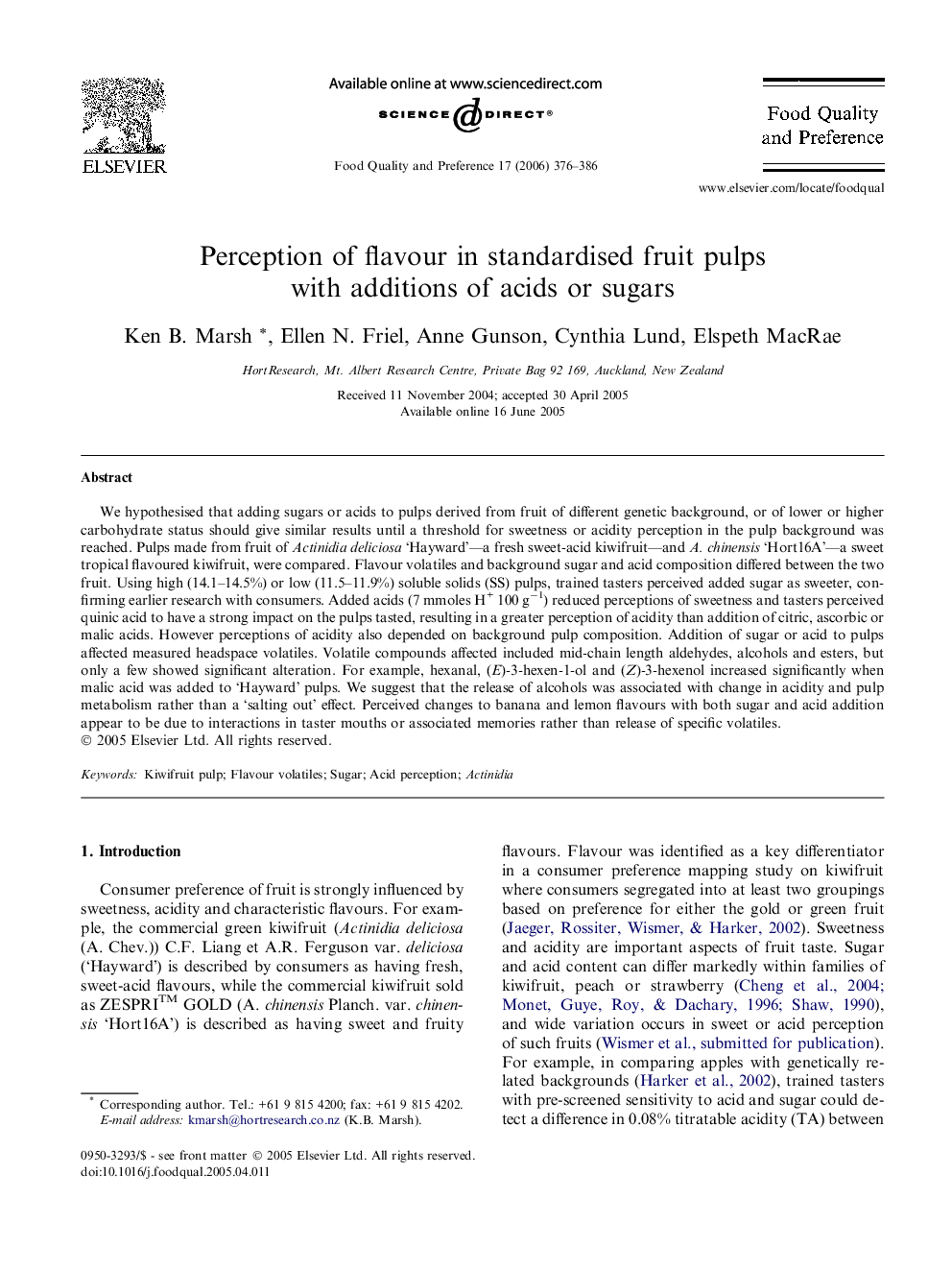| Article ID | Journal | Published Year | Pages | File Type |
|---|---|---|---|---|
| 4318306 | Food Quality and Preference | 2006 | 11 Pages |
We hypothesised that adding sugars or acids to pulps derived from fruit of different genetic background, or of lower or higher carbohydrate status should give similar results until a threshold for sweetness or acidity perception in the pulp background was reached. Pulps made from fruit of Actinidia deliciosa ‘Hayward’—a fresh sweet-acid kiwifruit—and A. chinensis ‘Hort16A’—a sweet tropical flavoured kiwifruit, were compared. Flavour volatiles and background sugar and acid composition differed between the two fruit. Using high (14.1–14.5%) or low (11.5–11.9%) soluble solids (SS) pulps, trained tasters perceived added sugar as sweeter, confirming earlier research with consumers. Added acids (7 mmoles H+ 100 g−1) reduced perceptions of sweetness and tasters perceived quinic acid to have a strong impact on the pulps tasted, resulting in a greater perception of acidity than addition of citric, ascorbic or malic acids. However perceptions of acidity also depended on background pulp composition. Addition of sugar or acid to pulps affected measured headspace volatiles. Volatile compounds affected included mid-chain length aldehydes, alcohols and esters, but only a few showed significant alteration. For example, hexanal, (E)-3-hexen-1-ol and (Z)-3-hexenol increased significantly when malic acid was added to ‘Hayward’ pulps. We suggest that the release of alcohols was associated with change in acidity and pulp metabolism rather than a ‘salting out’ effect. Perceived changes to banana and lemon flavours with both sugar and acid addition appear to be due to interactions in taster mouths or associated memories rather than release of specific volatiles.
